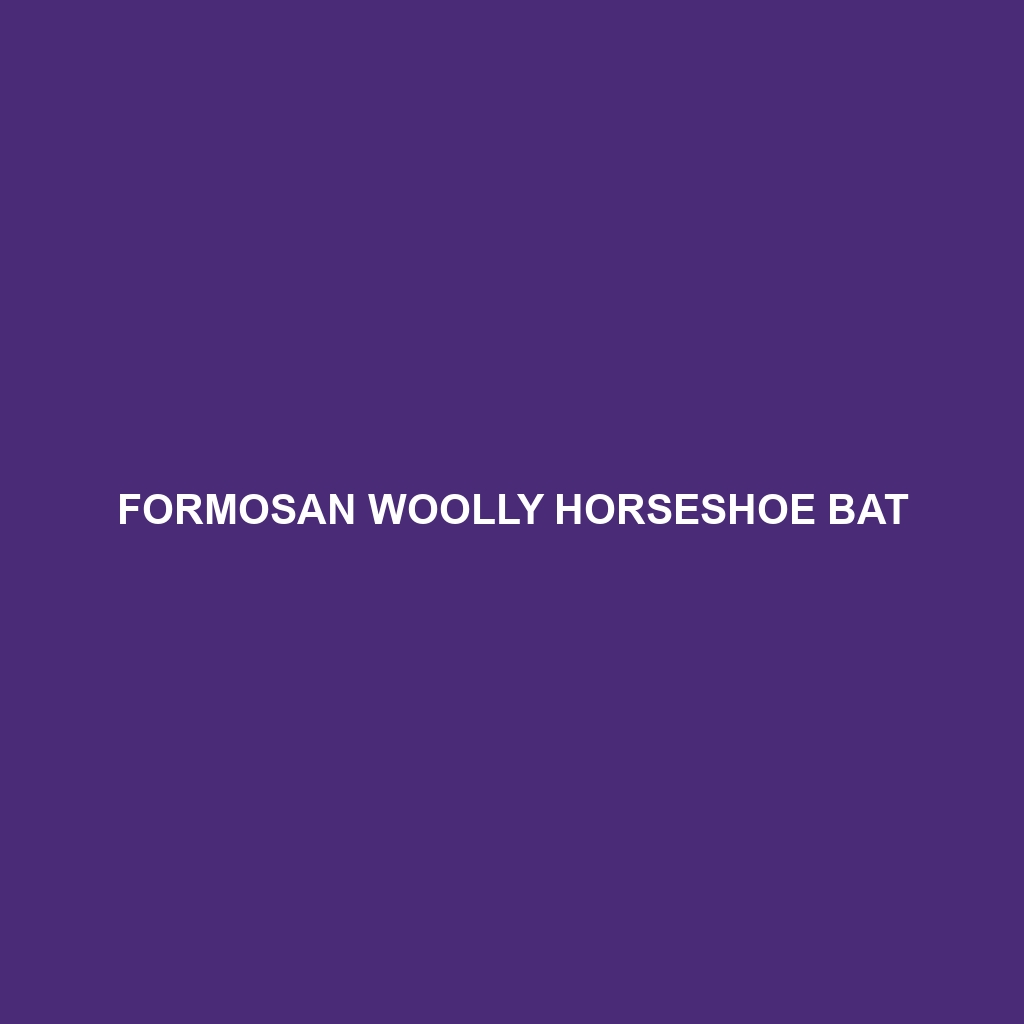Andersen’s Woolly Horseshoe Bat: A Comprehensive Species Description
Common Name: Andersen’s Woolly Horseshoe Bat
Scientific Name:
Habitat
The Andersen’s Woolly Horseshoe Bat is primarily found in tropical forested regions across Southeast Asia, notably in countries such as Indonesia, Malaysia, and parts of Vietnam. Their preferred habitats include dense forests and sometimes agricultural areas, where they roost in tree hollows and caves, providing them with necessary shelter and foraging grounds.
Physical Characteristics
Andersen’s Woolly Horseshoe Bat is relatively small, with an average wingspan of approximately 25 to 30 centimeters. They are characterized by their distinctive woolly fur, which ranges in color from dark brown to gray. Their nose features a prominent horseshoe-shaped structure that distinguishes them from other bat species, and they possess large eyes that aid in their nocturnal activities.
Behavior
This species exhibits nocturnal behavior, emerging at dusk to hunt for insects. Their echolocation abilities are highly developed, allowing them to navigate and hunt effectively in the dark. Socially, they can be found roosting in small colonies, but they often prefer solitude when foraging, which enhances their hunting success.
Diet
The diet of the Andersen’s Woolly Horseshoe Bat primarily consists of insects, particularly moths, beetles, and other flying invertebrates. They are adept at hunting in open spaces and near vegetation, utilizing their echolocation to detect and capture prey efficiently during their nightly foraging expeditions.
Reproduction
Breeding typically occurs during the warm months, with females giving birth to a single pup after a gestation period of approximately 70 to 80 days. The young are dependent on their mothers for survival in the initial weeks, during which they receive nourishment and protection until they can fly and forage independently.
Conservation Status
The Andersen’s Woolly Horseshoe Bat is currently classified as vulnerable due to habitat loss and fragmentation caused by urban development and agricultural expansion. Conservation efforts are crucial to ensure the survival of this unique species and to preserve their natural habitats.
Interesting Facts
One notable fact about the Andersen’s Woolly Horseshoe Bat is their impressive ability to adapt to different forest environments. They are also known for their unique vocalizations, which play a role in both communication and mating rituals. Their distinctive appearance and behaviors make them a subject of interest for researchers and nature enthusiasts alike.
Role in Ecosystem
As an integral part of their ecosystem, Andersen’s Woolly Horseshoe Bats contribute significantly to insect population control. By preying on various insects, they help maintain ecological balance and promote biodiversity in their habitats. Furthermore, their relationship with plant life, through seed dispersal within their roosting environments, underscores their importance in maintaining healthy forest ecosystems.
